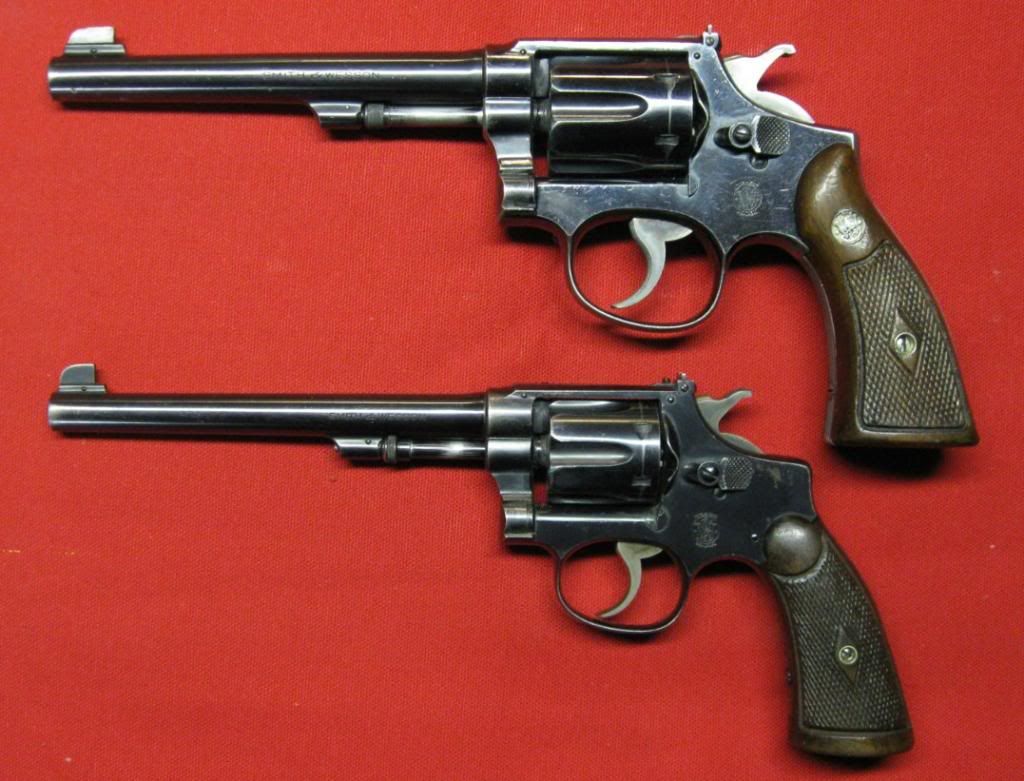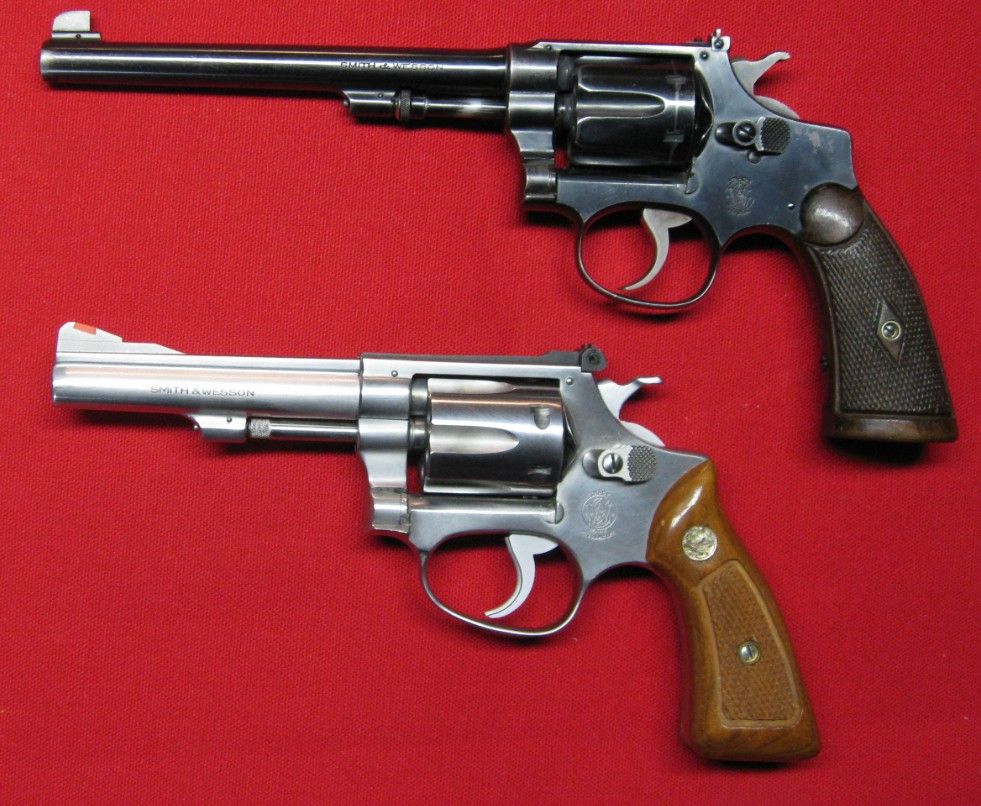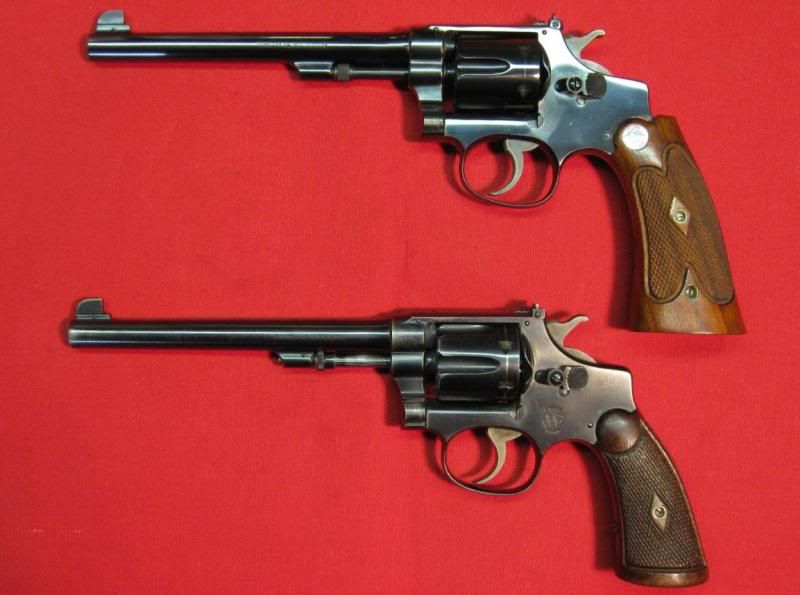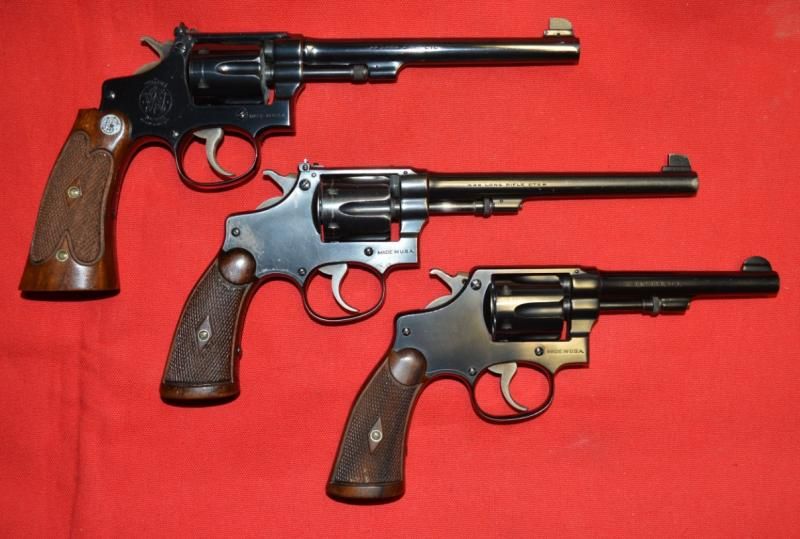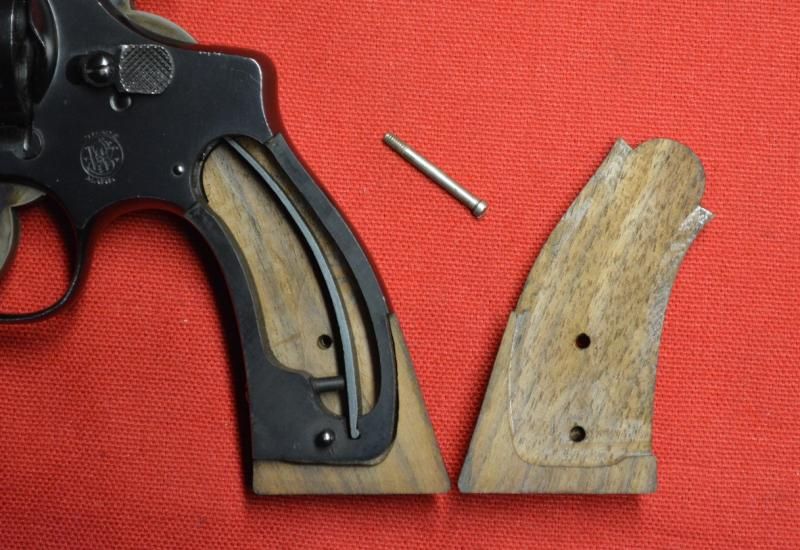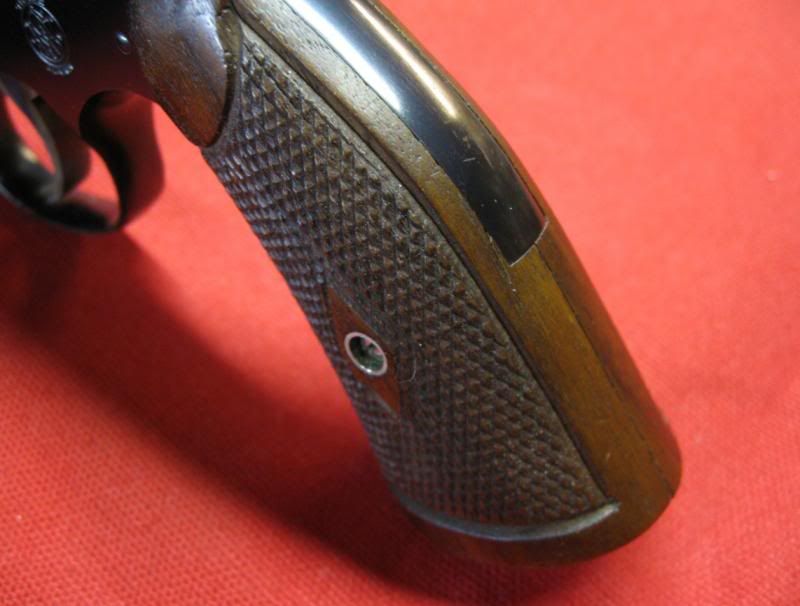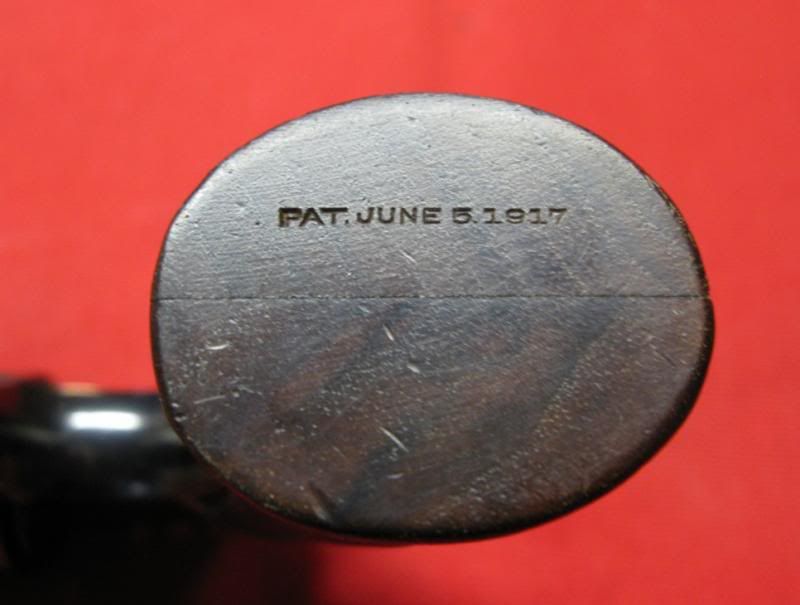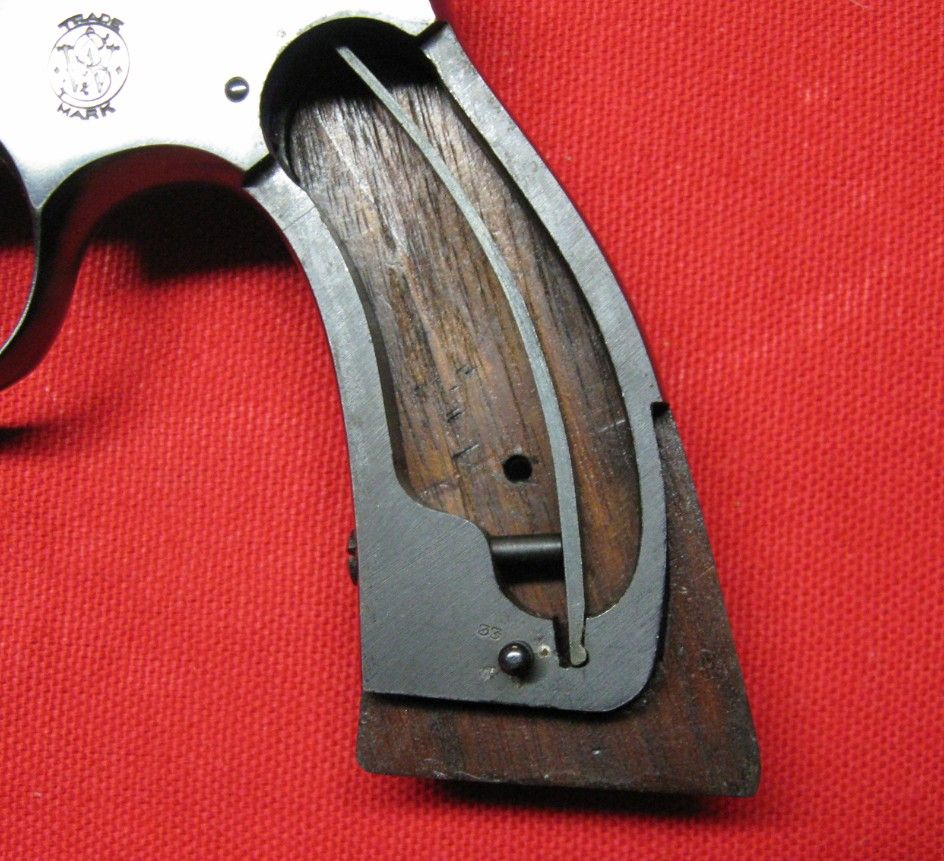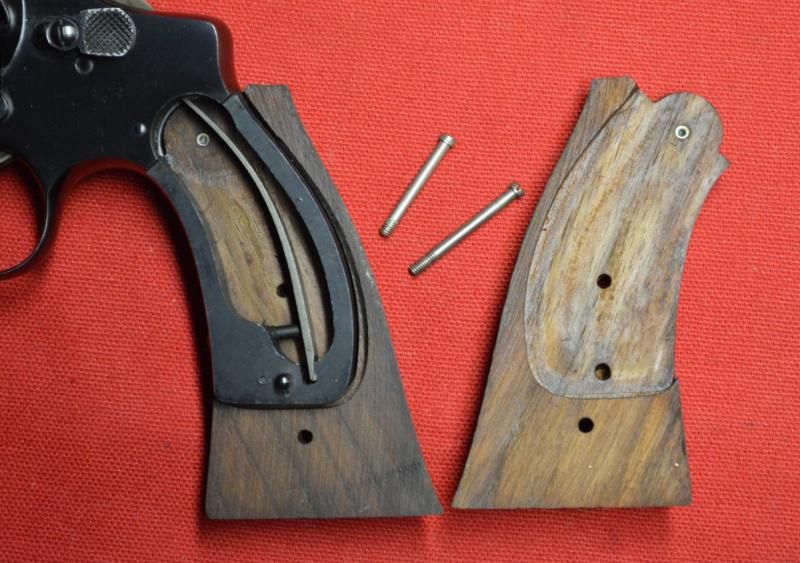One of the guns made on the I frame was the Regulation Police, which is unique in having an odd "step" in the backstrap, apparently to support the wood stock if the gun were used as a club. (Driftwood, do you know if that is the case, or if not, what was the reason for it?)
Howdy
I dunno about using an I frame as a club. I suspect it had more to do with patent issues. When the Regulation Police model first came out in 1917 it had the 'shouldered backstrap' that you are talking about. To quote the SCSW
"The frame is made with a shouldered backstrap to accept a new style of square-butt checkered walnut medallion buttstocks with a patent date of "Pat. June 5 1917" stamped lightly in the the wood on the bottom of the left panel. The round butt grip frame is enclosed by wood, with the upper portion of the gripframe backstrap exposed. These unique stocks are not interchangeable with the previous models."
Currently I do not own a Regulation Police, gut I have 3 other old Smiths built on the I frame. They are, top to bottom, a 22/32 Heavy Frame Target with the Bekeart style extended target stocks, a 22/32 Heavy Frame Target with the Regulation Police style stocks, and a 32 Hand Ejector, 3rd Model, also with the Regulation Police style stocks.
The little 32 shipped in 1925. I have removed the grips to show how they are inletted around the metal grip frame.
Here you see the exposed upper portion of the backstrap.
And here is the patent date stamped onto the bottom of the grips.
Here is a close up of the grips and how they are inletted around the gripframe of the 22/32 Heavy Frame Target. This gun shipped in 1923. It also has the patent date stamped on the bottom of the grips.
Lastly, here are the extended Bekeart style grips on the 22/32 Heavy Frame Target. This gun shipped much later, in 1940. Notice the inletting has been simplified on these grips. The patent date is absent from the bottom of these grips. I do not have an older Bekeart to compare how the the inletting was done. I have read that the early Bekearts had a separated serial number stamped on the bottom of the grips.
Because the butts of these guns, the area whee S&W normally stamps the Serial Number, were covered by the stocks, the Serial Number was stamped on the front edge of the metal grip frame. Sorry, I am not allowed to post a 7th photo onto this post to show that.
Anyhoo, Smith and Wesson were always sticklers for patents, starting with their control of the Rollin White patent for bored through cylinders back in the 1850s. I suspect that the shouldered backstrap had as much to do with patenting the shape as anything else, that's my guess.

